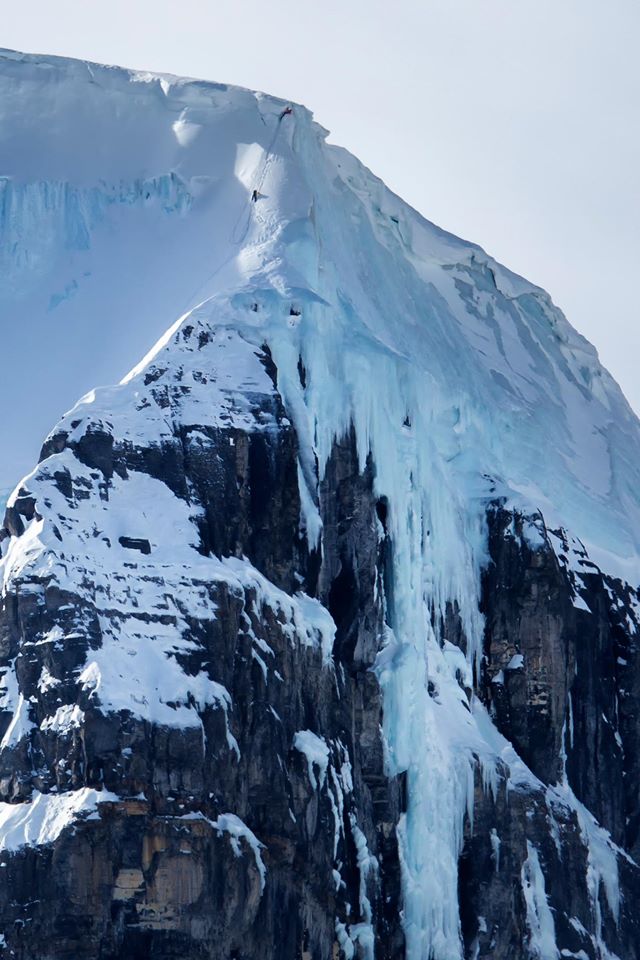This from my friend Ed @
http://iceclimbingjapan.com/
I think it worth a blog of its own. Food for thought and worth the read. Typical of the Industry not everything is a step forward although we are lead to believe that is always so. Boots come to my mind here.
"Lessons from the future.
Every now and then a piece of the system comes along that advances about 10 things
in the one garment. Rather than spread it across an entire range, for some reason
the producers decide to put the whole into one unit and see where it goes.
In this vein the MHW Quark is exceptional, excelling in so many fields its like it
slipped thru from the future, and all done so effortlessly it makes you wonder what
comes next.
The quark weights 285gms/10oz and is a FULL spec jacket. Full as in full zip, pit
zips, hand pockets and an inner pocket. The hood easily goes over any helmet, the
cuffs have adjusters, the seams are taped and it even has a hang loop, stiffened
brim and micro-fleece to protect you from the zip. There is nothing missing – it’s a
full weather shell.
There are windshells with next to nothing in them that weigh similar.
Futuristic elements include z-weld seams that have the strength of sewn seams but no
actual sewing. The zips are incredibly thin and water resistant, but remain
undamaged.
The fabric breathes. Known as conduit ‘Incite’, the MHW design spec was ‘water
resistant bug mesh’ and they got it. It also stretches well. Its tough. Its not
annoyingly tacky on moist skin and it crumples small and silently. The only problem
is its not available in any colour except Dr Who silver, with a slight high tech
texture that’s more graphitey than shiny – you can actually feel the bug mesh
quality. In a metallic orange or green it would be beautiful in a butterflys wing
kind of way.
I will testify on this jacket. Ive worn it for autumn ultras, dozens of climbing
trips including attempts on k2. Its been trashed in slips on rock and thrashed from
being strapped onto the outside off packs. I still wear it regularly and wonder at
it every time.
As a windshell its light and venting enough, and as a sun layer it actually reflects
a degree of heat. The cut is enough to go over every layer you have. In other words
for high alpine climbing its as good as it gets.
Problems: where are the pants to match it? Fabric and construction this amazing
deserves an entire suit – even a 1 piece for high altitude trips. It would look like
something from x-men, but who cares?
As it goes, the Quark came and went barely noticed from the market in 2006….
It retailed at about $200 so it wasn’t too radical in price, and was the same era
when people raved about Paclite and XCR. Despite all its innovations amazingly
little has trickled down – where did the fabric, seam construction and design specs
go? Why have those same elements never made it into a single garment at that weight
and function again? Years on and we still ooh and ahh at sub-300gm jackets, thinking
anything that light must be stripped of all that makes it work, pushing it to rely
on wonder-fabrics for functions that, really, are still better achieved by design.
In the years since ive used other jackets but the Quark is still the one I hold the
rest against – and intend to for more time to come. Ive actually take in into
development meetings to put before designers as the standard they need to meet or
exceed for multiple factors, not all pertaining to textiles and construction.
In all truth, it’s the jacket I used until I replaced it with designs with my own
input – many of which came from the Quark. Half a decade on and it is still a hard
design to beat.
To me this jacket says more about the industry than anything else – it shows whats
out there and how receptive climbers really are. Incredible innovations can be sat
before the market but invisible due to outdated expectations. Was it simply the
weird colour that made it fail?
Reviews of the time were very positive, the only constant negative being that it was
considered too light – for heavy packing trips in the Pac NW or scratching up
chimneys in a Scottish winter.
What would happen if this jacket was released today? Who would buy it? What would
the reviews be like?
I raise this because the same expectations still plague our humble sport (but not so
humble consumerism). Innovations await that take things a step or more into the next
phase, but conservatism by consumers holds it back – we want the latest, but only if
it’s the same as what we already know.
What does ‘The Quark Experiment’ tell the producers about the sector – is it worth
putting highly innovative products out there? Or better to bleed the new stuff out
over several seasons?
Are climbers really being exploited with trickle-out marketing or are they simply
too conservative a consumer base to be worth taking risks on?
If the market curtains were dropped and the designs for the true lightest and most
breathable shell was put before us, who would step forward?
<<<

















































